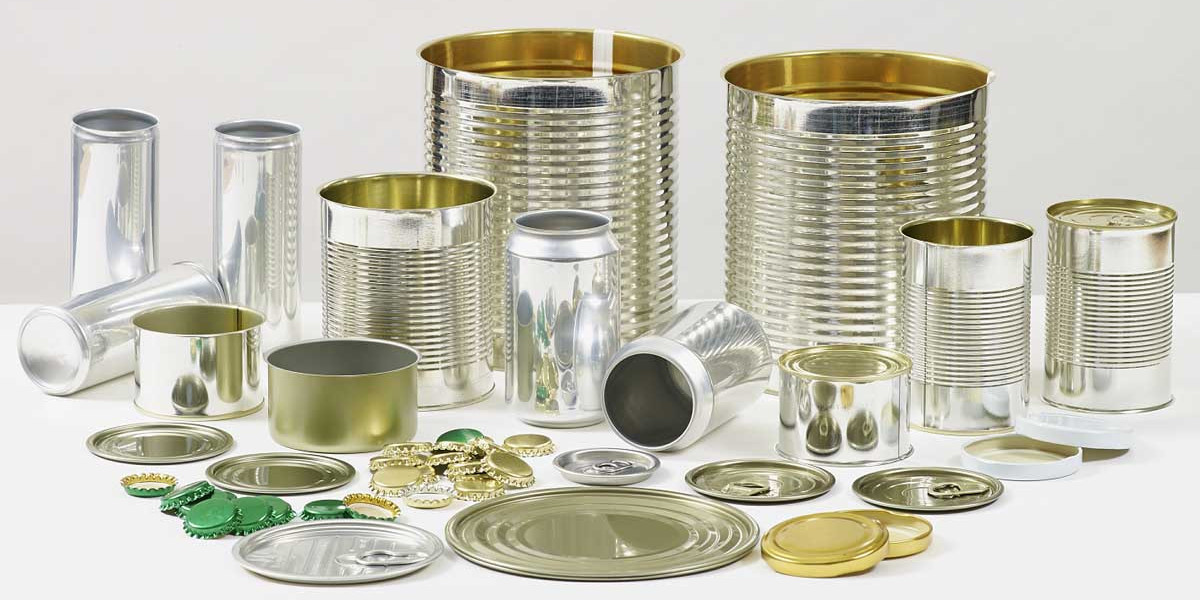Overview of the Australia Metal Packaging Market
The Australia metal packaging market size was valued at 38.19 billion units in 2023 and is projected to grow at a modest CAGR of 1.1% between 2024 and 2032, reaching approximately 42.43 billion units by 2032. Metal packaging is crucial across various sectors, including food and beverages, pharmaceuticals, and cosmetics, due to its durability, recyclability, and superior protective qualities.
Key Benefits of Metal Packaging
Metal packaging offers several advantages that contribute to its widespread use. It provides unmatched durability, effectively protecting contents from physical damage, contamination, and spoilage. Metals such as aluminium and steel offer excellent barrier properties that prevent the permeation of light, moisture, and air, ensuring product integrity over time. Additionally, metal packaging is highly recyclable, aligning with global sustainability efforts and the circular economy model. Its long shelf life and eco-friendly attributes make metal packaging a preferred option for both manufacturers and consumers.
Key Industry Developments
- Sustainability Initiatives: The push towards sustainable packaging has driven significant developments in the metal packaging industry. Companies are focusing on lightweighting and using recycled materials to reduce environmental impact.
- Advanced Printing Technologies: Innovations in printing technology have enabled more attractive and informative designs, enhancing brand visibility and consumer engagement.
- Smart Packaging Solutions: The incorporation of smart technologies, such as QR codes and NFC (Near Field Communication), in metal packaging is enabling better traceability and interaction with consumers.
Driving Factors
Several key drivers are propelling the growth of the Australia metal packaging market:
- Rising Demand for Eco-Friendly Solutions: With increasing consumer awareness around sustainability, metal packaging's recyclable nature has become a significant advantage. Consumers and brands alike are prioritising packaging solutions that reduce environmental impact.
- Growth in the Food and Beverage Sector: The expanding food and beverage industry continues to be a major driver for metal packaging. Products like canned beverages, ready-to-eat meals, and preserved foods rely on metal packaging for extended shelf life and freshness.
- Innovation and Customisation: Advancements in customisation and design flexibility have allowed brands to differentiate their products through unique and visually appealing packaging. Enhanced printing capabilities and innovative shapes contribute to brand recognition and consumer attraction.
- Protective Features: The robust nature of metal packaging ensures that products remain safe during transport and storage, reducing waste and improving customer satisfaction.
COVID-19 Impact
The COVID-19 pandemic had a significant impact on the metal packaging market in Australia. Initially, disruptions in the supply chain and manufacturing setbacks slowed down production. However, the pandemic also accelerated demand for packaged goods, especially in the food and beverage sector, as consumers stocked up on non-perishable items. This increased demand bolstered the use of metal packaging for canned foods and beverages, providing a stable growth trajectory during and post-pandemic. The focus on hygiene and safety further reinforced the importance of metal packaging due to its protective properties.
Restraining Factors
Despite the promising growth outlook, certain challenges could restrain market expansion:
- High Production Costs: Metal packaging production involves higher initial costs compared to some alternative materials like plastics. This cost can be a limiting factor for small and medium enterprises (SMEs) looking to adopt metal packaging solutions.
- Competition from Alternative Materials: The availability of alternative packaging materials, such as flexible plastics and bioplastics, poses a challenge. These materials often offer cost benefits and customisation options that may appeal to manufacturers.
- Recycling and Energy Use: Although metal is recyclable, the recycling process can be energy-intensive. The carbon footprint associated with metal production and recycling could deter some environmentally conscious companies and consumers.
Market Segmentation
By Material Type:
- Aluminium
- Steel
- Tin
By Product Type:
- Cans
- Containers
- Caps and Closures
- Drums and Barrels
- Aerosol Cans
- Others
By End-Use Industry:
- Food and Beverage
- Pharmaceuticals
- Personal Care and Cosmetics
- Industrial
- Others
Market Outlook
The future of the Australia metal packaging market is expected to be driven by the continued push for sustainability and the development of eco-friendly solutions. Technological advancements in packaging design and production will play a crucial role in market expansion. The demand for smart packaging that enhances consumer interaction and product traceability is likely to grow, contributing to the adoption of metal packaging in more innovative applications.
Trends in the Market
- Sustainability-Focused Packaging: Sustainability remains a key trend, with a strong focus on using recycled materials and reducing overall environmental impact. Brands are also marketing their products with a sustainability message, resonating with eco-conscious consumers.
- Premiumisation of Packaging: Metal packaging offers a high-end feel that is associated with quality. This has led to its increased use in premium products, including specialty foods, craft beverages, and luxury cosmetics.
- Technological Integration: The use of smart labels and interactive packaging features is becoming more prevalent, allowing consumers to access product information and engage with brands in new ways.
- Lightweighting Initiatives: Manufacturers are exploring ways to reduce the weight of metal packaging without compromising strength, thereby lowering material costs and improving sustainability.
Industry Segmentation and Regional Analysis/Insights
Regional Insights: The metal packaging market is widespread across various regions in Australia, with significant demand in urban centres such as Sydney, Melbourne, and Brisbane. These cities host numerous food and beverage producers, pharmaceutical companies, and consumer goods manufacturers, contributing to strong regional demand for metal packaging. Additionally, regional trends indicate a growing preference for sustainable solutions in response to local environmental initiatives.
Target Audience:
- Food and Beverage Manufacturers
- Pharmaceutical Companies
- Personal Care and Cosmetics Brands
- Packaging Designers and Developers
- Environmental Advocacy Groups
Analysis and Top Impacting Factors
- Sustainability Concerns: With growing environmental consciousness, brands and consumers are increasingly favouring recyclable and sustainable packaging solutions, boosting demand for metal packaging.
- Rising Consumer Demand for Safe and Durable Packaging: The protective nature of metal packaging meets consumer needs for safe, tamper-proof packaging, making it a preferred choice.
- Advancements in Production Technology: Innovations in production techniques that focus on reducing the carbon footprint and energy use of metal packaging are impacting the market positively.
Opportunities
- Expanding Applications in Non-Food Sectors: The use of metal packaging in pharmaceuticals and personal care products is expected to rise, providing new growth opportunities for market players.
- Adoption of Smart Packaging: Integrating digital technologies such as QR codes and NFC can create interactive experiences that enhance brand loyalty and product transparency.
- Recycled Content Growth: Companies that invest in sustainable practices, including the use of recycled metal content, can leverage this as a competitive advantage.
Challenges
- High Initial Costs: The higher costs associated with metal packaging compared to alternatives like plastics can deter some manufacturers.
- Energy-Intensive Processes: The production and recycling of metal packaging require significant energy, potentially impacting the market’s eco-friendly perception.
- Supply Chain Disruptions: Any disruptions in the supply chain can affect the steady availability of raw materials needed for metal packaging.
Scope
The scope for growth in the Australia metal packaging market is broad, driven by a blend of sustainability trends, technological advancements, and increasing consumer demand for safe, durable packaging. Companies that embrace eco-friendly practices and integrate innovative features are expected to remain competitive and influential in the market.
Subcategory: Packaging – Metals and Materials
Metal packaging falls under the broader category of packaging within the metals and materials sector. This subcategory focuses on solutions that combine strength, sustainability, and versatility, catering to various end-use industries.
Major Key Players
- Amcor plc
- Ball Corporation
- Crown Holdings, Inc.
- Ardagh Group S.A.
- Silgan Holdings Inc.
- Can-Pack Group
- NCI Packaging
- Orora Limited
The Australia metal packaging market is set for steady growth, supported by sustainable practices, innovation in production, and the expanding food and beverage sector. While challenges such as high production costs and competition from alternative materials remain, opportunities for growth are evident in the adoption of new technologies and environmentally responsible solutions. Market players focusing on sustainability, customisation, and smart packaging will be well-positioned to leverage future growth and meet evolving consumer demands.







